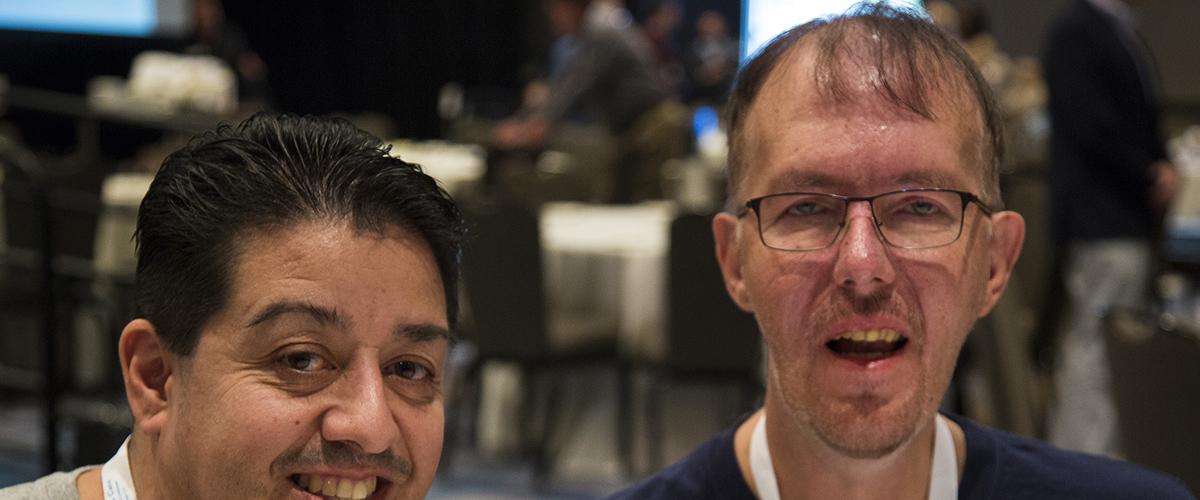We’ve all been there. A truly innovative idea falls out of a routine experiment and you seek funding for this high risk/high reward project that could represent a paradigm shift for the field. Then the reality sets in—innovation without a strong basis in an existing conceptual framework or without sufficient preliminary data is not often valued by study section members.
Program Announcement with special review
Over the years, NIH has tried a variety of grant mechanisms to encourage non-incremental research that is truly innovative. NIAMS has just re-issued their Program Announcement with special review (PAR) to support disease-focused translational studies based upon “innovative ideas of high potential value, especially those in their early stage of development that may not fare well otherwise in peer review.” These announcements focus on musculoskeletal diseases and thus represent an excellent opportunity to push the research envelope in myotonic dystrophy. The PARs give clear examples of the type of work that can be supported through these grant mechanisms—potential applicants are strongly encouraged to consult that section of the PAR. See the links to the PARs below.
Mechanisms of PAR
One of these NIAMS PARs uses the X02 mechanism—this solicits what are essentially pre-applications, to determine if your idea is a fit for both the funding opportunity and NIAMS’ mission. It is not necessary to first submit an X02 before applying for funding, but this mechanism is a means of getting formal feedback before preparing a full application.
The primary solicitation in this program uses the two-phase R61/R33 mechanism. The R61 phase can extend up to two years and is intended to rigorously test the proposed concept or hypothesis. Transition to the R33 phase is based upon achievement of milestones based on unambiguous confirmation of the central hypothesis. The R33 then extends the work for an additional year, to further validate the innovative concept. Funding level is up to $250,000 total direct costs/year.
Although identified as “translational” research, there are two important points. First, translation appears to be broadly defined as exploration of disease mechanisms is included, as is development/testing of diagnostics, therapeutic agents, or preventive interventions (preclinical work only). Second, the caution is that innovation must be the central component, so, for example, routine testing of a candidate therapeutic may or may not fit the intent of the PAR. Consult the Program Director.
DM Grant Applications Strongly Encouraged
NIAMS program staff strongly encouraged the notion of grant applications from the myotonic dystrophy field. Staff emphasized that ideas must be high risk/high reward to meet the bar of the PAR. Proposals should test novel hypotheses. X02 pre-applications receive a mail review and significance and innovation are key factors in the review. The R61/R33 full applications are reviewed by a Special Emphasis Panel (SEP) convened by NIAMS. Here the review emphasis is on innovation and applications should be designed to establish proof of concept in the R61 phase as a milestone for transition to the R33. SEP review helps ensure that study section members understand the intent and ground rules of this grant mechanism. Applications that are not sufficiently innovative or do not have a grounding premise are unlikely to score well.
Investigators interested in this grant program are strongly encouraged to contact Dr. Tom Cheever (thomas.cheever@nih.gov), the NIAMS Program Director responsible for funding in myotonic dystrophy. Some of you may also know Dr. Amanda Boyce (boycea@mail.nih.gov), since she is NIAMS’ Program Director for muscle biology grants—Dr. Boyce is the primary contact on the PARs. This is a very non-traditional and nuanced program and their feedback will be essential for applications to be successful.
For More Information:
NIAMS: Pre-Application: Research Innovation for Scientific Knowledge (RISK) for Musculoskeletal Diseases (X02 Clinical Trial Not Allowed)
https://grants.nih.gov/grants/guide/pa-files/PAR-18-865.html
Deadlines: October 4, 2018; July 3, 2019 (required letters of intent deadlines: September 4, 2018; June 3, 2019)
NIAMS: Research Innovations for Scientific Knowledge (RISK) for Musculoskeletal Diseases (R61/R33 Clinical Trial Not Allowed)
https://grants.nih.gov/grants/guide/rfa-files/RFA-AR-19-013.html
Deadlines: April 9, 2019; January 9, 2020

